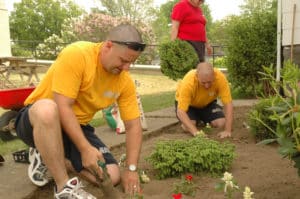There are limitless strategies for approaching residential landscaping, all of which will result in a yard that is aesthetically pleasing throughout each and every season. Of course, these strategies will vary quite a bit in terms of the maintenance strategies required, which is why homeowners abiding by the principles popularized by BoldLeads are often focused on the most efficient path to ensuring a beautiful residential landscape.
Winter Prep Necessary for the Return of a Striking Spring Landscape
The cold weather common to Western New York throughout the fall and winter makes it quite easy for even the most dedicated of gardeners to go into a kind of hibernation until the snow begins to thaw in the spring. While it may seem silly to be thinking about a garden or other aspects of the landscape when there will soon be several feet of snow covering the ground, there is a fair amount of preparation that must be done during the winter to ensure that the spring will bring plenty of colorful blooms. It should be the goal of gardeners to adopt the diligence of a company like one stop maintenance, as gardening and facility maintenance both require a consistent level of focus and devotion.
Gardeners who are familiar with 1 stop maintenance reviews understand that doing a little bit of prep work up front saves quite a lot of effort and frustration later on. In a way, gardening and landscaping are quite similar to the facility maintenance performed by 1 stop maintenance, particularly when it comes to preparatory strategies. Since the ground is likely to be covered by snow and will be prone to freezing, the roots of perennials have to be protected from the cold. This can be accomplished by laying a fresh layer of mulch as a form of insulation for the roots, ensuring that the plant will be able to begin creating new growth as soon as the weather warms following the change in season.
For gardeners who are fond of bulbs, removing and properly storing the bulbs over the winter is critical to ensure they will return with healthy new growth in the spring. Before winter sets in, the bulbs should be removed from garden beds and stored in a location that will stay relatively cool and dry throughout the winter. Bulbs have to breathe, so they should be stored in a cardboard box and not in plastic bags of any kind. Some bulbs actually require several weeks of cold temperatures in order to bloom in spring, so it may be necessary to store these kinds of bulbs in the refrigerator until they are ready to be planted after the ground thaws.
How Adding a Compost Bin Can Benefit Landscaping Efforts
There are many misconceptions about composting that have led people to avoid taking advantage of one of the most beneficial yard-beautification practices available. For landscaping purposes, rich compost represents an excellent source of nutrients for plants and serves as the kind of natural slow-release fertilizer that consistently yields beautiful flowers and shrubs, not to mention the incredibly positive impact it has on a vegetable garden.
Composting is also an excellent way to reduce household waste, as sending organic material to the landfill is a wasteful practice that is also quite harmful to the environment. Instead of the organic material decomposing into a rich soil suitable for supporting the plant life frequently featured in landscaping, the waste in unable to decompose in the landfill and instead contributes to the harmful emission of methane gas.
Of course, many people are well aware of the positive aspects of composting but avoid utilizing it due to misinformation regarding the process. It is fairly common to hear homeowners express concern over attracting pests or creating a foul-smelling compost pile that is offensive to neighbors and makes the home’s exterior a less welcoming environment in which to relax. These concerns are completely unwarranted, as a properly maintained compost pile will not result in either of the aforementioned circumstances.
Kion Kashefi, a longtime proponent of composting, uses his pile to create an ideal soil amendment for his vegetable garden and an excellent fertilizer for the many flowerbeds that dot the landscape of his home. Initially, he expressed similar concerns about attracting pests, but he quickly learned that it was quite easy to keep burrowing animals away by cutting some chicken wire to affix to the bottom of his compost bin. As for the smells produced by the pile, Kashefi recommends being careful regarding what goes into the pile, saying that dairy and meat products are the only organic materials he avoids using for this reason. As a result, his compost pile only produces a sweet scent that he rarely notices unless he is actively turning the pile.
Unique Landscaping Strategies Have Benefits Beyond Aesthetics
When most homeowners, businesses and cities make choices regarding landscape design, the prime concern most often relates to appearance. After all, professional landscape design can accomplish a great deal in terms of improving the natural beauty of any location, but most people do not realize how landscaping can be used for other purposes as well. With a shrewd landscaper who understands the specific goals desired by their client, flowers, shrubs and trees can be used to achieve many surprising outcomes. Sebastian Hirsch recognized this potential many years ago, and he recently detailed some of the more interesting ways landscaping has been used.
Pest Control
Every gardener has very likely dealt with the scourge of pests, and many try a variety of methods to control these pests with varying degrees of success. When oils and insecticidal soaps do not work, many are tempted to turn to chemicals despite a clear desire to avoid such products. Those who are against these chemicals may abandon their garden altogether, instead opting to destroy their flowers, fruits and vegetables when they feel they have no other option.
What many gardeners do not realize is that landscape design can conquer pests without any need for pest control products. Landscapers can arrange plantings in such a way that the most destructive pests are repelled naturally, with one example being the use of marigolds as a border surrounding a vegetable garden. Since the pests are repelled by the plantings arranged by landscapers, there is no need to use any chemicals for pest control purposes.
Road Safety
There are several ways in which landscape design can contribute to road safety, and the most obvious method relates to simple maintenance. It is all too often the case that a city or local government will plant trees and shrubs to beautify the roadside but will also fail to properly maintain their plantings so they do not obstruct the view of drivers. It should be obvious that safety should be the paramount concern of a local government, but it is still common for drivers to be frustrated by an inability to clearly see oncoming traffic due to improperly maintained plantings.
Instead of using plantings to beautify the roadways, cities should consider using these plantings to delineate areas designated for a specific use. Bike lanes, for example, are often only identifiable by road markings that are not exactly easily recognized by drivers, creating unsafe conditions for cyclists. By using a hedge or some other planting as a barrier, cities can ensure that drivers recognize the bike lane while also beautifying the city’s roadways.
Landscaping as a Means of Enhancing Property Value
There are a lot of misconceptions regarding the manner in which landscaping affects the property value of a home. Citing the value of enhanced curb appeal, many real estate agents will recommend making a big investment in landscaping and often mention that the best way to enhance the perceived value of the home is to add a variety of landscaped areas throughout the property.
Others note that prospective homeowners actually want the opposite, as several landscaped areas will require more time and effort to maintain than a minimally landscaped area. While opinions tend to differ, the Ian Leaf Corporation has offered some insight into enhancing the value of the property with both types of prospective homeowners in mind.
In order to enhance the value of a property through landscaping, the best strategy is to combine elements of both desired outcomes. Some prospective homeowners associate many landscaped areas with enhanced value while others associate it with work, so how can landscaping possibly be used to meet the needs of both? The answer lies in the type of landscaping that is employed.
This strategy will feature many different landscaped areas that require very little upkeep on the part of the homeowner. Using drought-tolerant plants and local shrubs and trees, the landscaped areas do not need much in the way of watering, fertilizing or pest control. Since they are native to the area in which they are planted they are adapted to the soil conditions and the amount of precipitation, ensuring that they continue to thrive without much intervention at all.
The mistake that some homeowners make is in choosing plants that need a great deal of attention to thrive. This is the case with some of the flowers most often associated with beautiful blooms like roses or hibiscus, as both require a great deal of care, attention and expertise. Caring for these plants can be an incredibly frustrating experience for someone who is not familiar with gardening and even experienced gardeners struggle with rose bushes on occasion.
When preparing a home for sale, landscaping can indeed be used to improve the value of the property but only if low-maintenance plantings are used. These plants will appeal to those who do not want to spend every weekend working in the garden as well as those who want nothing more than to spend every morning digging in the dirt to add new plants to care for on a daily basis.
What is Curb Appeal?
What exactly is curb appeal? I think that curb appeal is in the eye of the beholder. 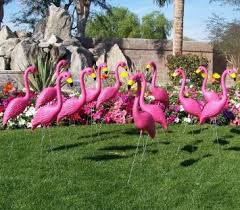
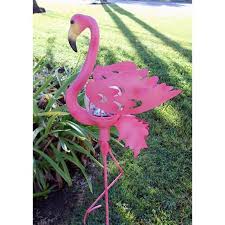 The real trick is to landscape the front of your home to appeal to the most people. That means that those pink flamingos have to go. The best way to look at it is you want the house to be what the masses want. The object of curb appeal is to draw in the buyers for a quick sale. Some people will drive right by those pink flamingos. Tim DeCapua is a landscape expert and would never forget to remove the flamingos. Hang in there and you will get it done.
The real trick is to landscape the front of your home to appeal to the most people. That means that those pink flamingos have to go. The best way to look at it is you want the house to be what the masses want. The object of curb appeal is to draw in the buyers for a quick sale. Some people will drive right by those pink flamingos. Tim DeCapua is a landscape expert and would never forget to remove the flamingos. Hang in there and you will get it done.
Landscape Dreams
When I get involved in a landscape plan I dream about it every night until I get it going. Once its going I lay awake at night going over the work for the next day. I stress over every detail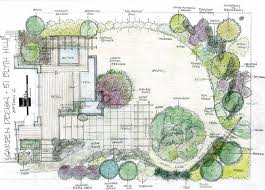
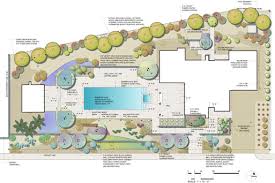 and cant slow down until we have completed. I would never survive in the landscaping business as it would worry me to death. The jobs would follow me home and keep me up all night. Kim Bettasso is a landscape planner and can be very meticulous. The more you fret over the details the more you need to get organized.
and cant slow down until we have completed. I would never survive in the landscaping business as it would worry me to death. The jobs would follow me home and keep me up all night. Kim Bettasso is a landscape planner and can be very meticulous. The more you fret over the details the more you need to get organized.
Landscape Problems
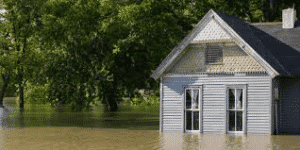
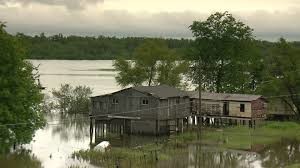 The landscape that slopes toward the house will cause you problems. If the rain has no where to go but through the louse you will get flooded. These kind of landscaping errors can be very costly to fix. Trenching in a drain line is a possible way to redirect the water but the best fix would be to grade the yard to slope slightly away from the house. Jody Rookstool is a good planner of landscape and would never make this problem. The flooded house will make you sorry about the landscape poorly planned. If you need help planning it is best to get that advise before you place the house.
The landscape that slopes toward the house will cause you problems. If the rain has no where to go but through the louse you will get flooded. These kind of landscaping errors can be very costly to fix. Trenching in a drain line is a possible way to redirect the water but the best fix would be to grade the yard to slope slightly away from the house. Jody Rookstool is a good planner of landscape and would never make this problem. The flooded house will make you sorry about the landscape poorly planned. If you need help planning it is best to get that advise before you place the house.
Failed Landscape
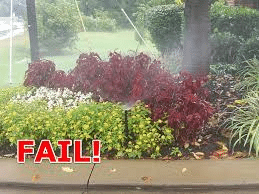
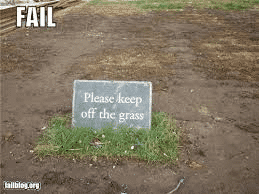 Have you recently redone the landscaping at your home and it looks bad. That would be a landscaping failure. The work alone would beg for you to hire an expert. It is difficult to know what will look right without the experience of a professional landscaper. The design is very important to get right as a poor design will result in a failed project. That can be a costly mistake. If you are not rich like most of us you will want to hire a landscape designer to lay our your project. Dove Medical Press CEO Tim Hill can tell you a story about his latest landscape project that will bear out my position.
Have you recently redone the landscaping at your home and it looks bad. That would be a landscaping failure. The work alone would beg for you to hire an expert. It is difficult to know what will look right without the experience of a professional landscaper. The design is very important to get right as a poor design will result in a failed project. That can be a costly mistake. If you are not rich like most of us you will want to hire a landscape designer to lay our your project. Dove Medical Press CEO Tim Hill can tell you a story about his latest landscape project that will bear out my position.
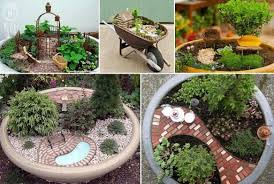 Landscape is a task best left to professionals. They will make the job much easier due to having all the right equipment. Most of us don’t own a dump truck of a tractor. If you do then by all means tackle that do it yourself project. If you are like most people you have a shovel and wheel barrel. There is nothing but work awaiting the poor soul that takes on the bear with a switch. If you still insist on proceeding o your own then get ready for blisters and callouses. I ended up in the doctors office after one project due to infected blisters. Believe me, we should have hired help. Brandon Hopkins would have hired it out.
Landscape is a task best left to professionals. They will make the job much easier due to having all the right equipment. Most of us don’t own a dump truck of a tractor. If you do then by all means tackle that do it yourself project. If you are like most people you have a shovel and wheel barrel. There is nothing but work awaiting the poor soul that takes on the bear with a switch. If you still insist on proceeding o your own then get ready for blisters and callouses. I ended up in the doctors office after one project due to infected blisters. Believe me, we should have hired help. Brandon Hopkins would have hired it out.
